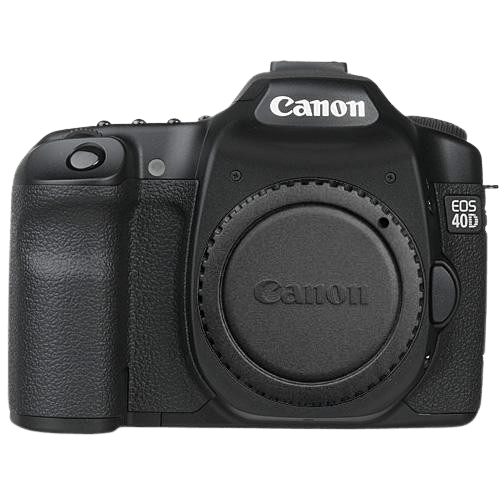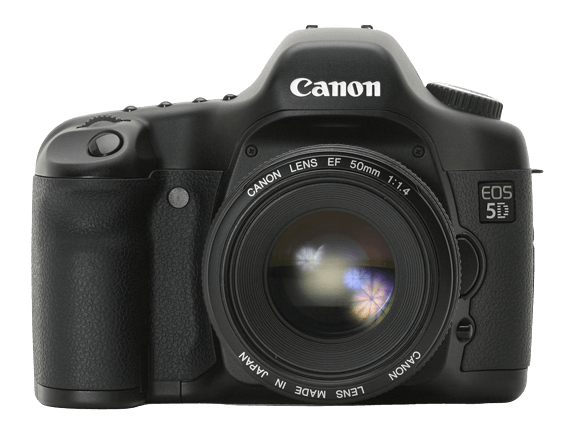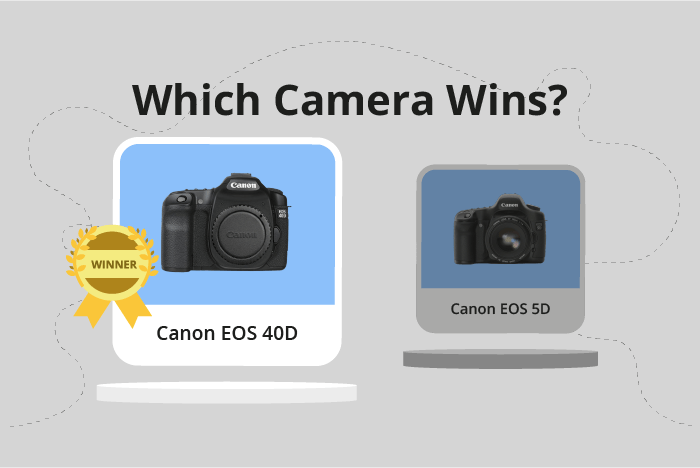Canon EOS 40D vs EOS 5D Comparison
Canon EOS 40D

Canon EOS 5D

The Canon EOS 40D emerges as the winner, scoring 42/100, while the Canon EOS 5D receives a score of 40/100. Both cameras are DSLRs, released in 2007 and 2005, respectively. They share similar dimensions, with the 40D being slightly smaller at 146 x 108 x 74mm and lighter at 822g, compared to the 5D’s 152 x 113 x 75mm and 895g. Additionally, the 40D had a lower launch price of $899, making it a more affordable option.
The 40D’s higher score reflects its advantages, such as its compact size and lighter weight, which make it more convenient for on-the-go photography. However, the 5D, despite its lower score, was initially a more expensive camera, possibly offering higher-end features, which could still appeal to some photographers.
Taking these factors into account, the 40D stands out as a more practical and affordable option, while the 5D may cater to those seeking specific high-end features.
Canon EOS 40D vs EOS 5D Overview and Optics
The Canon EOS 5D narrowly wins in the optics comparison with a score of 46/100, while the Canon EOS 40D scores 45/100. Both cameras share some common specifications, such as the CMOS sensor type, the absence of image stabilization, and the Canon EF lens mount compatibility. However, there are differences that contribute to the slight advantage of the EOS 5D.
The EOS 5D has a 12.7-megapixel sensor, compared to the 10.1 megapixels of the EOS 40D. This allows the EOS 5D to capture more detail in images. Additionally, the EOS 5D has a full-frame sensor size, while the EOS 40D has an APS-C sensor size. The full-frame sensor provides better low-light performance and a wider field of view. The DXOMARK score for the EOS 5D’s sensor is 71, higher than the EOS 40D’s score of 64, further validating its superior image quality.
On the other hand, the EOS 40D has a faster shooting speed of 6.5 frames per second, compared to the EOS 5D’s 3 frames per second. This makes the EOS 40D more suitable for capturing fast-moving subjects and action shots. The EOS 40D also features a newer Digic III processor, while the EOS 5D uses the older Digic II processor. The newer processor contributes to the faster shooting speed and improved image processing.
Despite the EOS 5D’s slight edge in optics, the EOS 40D has its advantages in shooting speed and processing. The EOS 5D is better for photographers prioritizing image quality, low-light performance, and a wider field of view. The EOS 40D, however, is more suitable for those who require faster shooting speeds and action photography.
Canon EOS 40D vs EOS 5D Video Performance
When examining the video capabilities of the Canon EOS 40D and Canon EOS 5D, it is important to note that neither camera has video functionality. This means both cameras lack the ability to record video, and their scores in this category are not applicable.
Canon EOS 40D vs EOS 5D Features and Benefits
The Canon EOS 40D wins the features comparison with a score of 36/100, while the Canon EOS 5D scores 30/100. Both cameras share several specifications, including a screen resolution of 230,000 dots, no touchscreen, no flip screen, no GPS, and no Bluetooth.
The Canon EOS 40D has a larger screen size of 3 inches, compared to the Canon EOS 5D’s 2.5-inch screen. This makes the EOS 40D more convenient for framing and reviewing images. However, the Canon EOS 5D offers Wi-Fi connectivity, allowing users to transfer photos wirelessly and control the camera remotely. The EOS 40D does not have this feature.
Despite the Wi-Fi advantage of the Canon EOS 5D, the Canon EOS 40D still comes out on top due to its larger screen size. The screen size of the EOS 40D contributes to a better user experience when composing and reviewing shots, which is a significant aspect of a camera’s features.
On the other hand, the Canon EOS 5D’s Wi-Fi connectivity is a valuable feature for those who prioritize wireless image transfer and remote camera control. Although this feature is beneficial, it does not outweigh the advantage of the larger screen size found in the EOS 40D.
Taking all the features into account, the Canon EOS 40D is the superior camera in this comparison due to its larger screen size. The Wi-Fi connectivity of the Canon EOS 5D is a notable advantage, but the overall user experience is improved with the EOS 40D’s larger screen.
Canon EOS 40D vs EOS 5D Storage and Battery
The Canon EOS 40D outperforms the Canon EOS 5D in storage and battery aspects with a score of 35/100, while the 5D scores 24/100. Both cameras have one memory card slot and accept Compact Flash (Type I or II) cards. Neither camera offers USB charging.
The 40D’s superior score is primarily due to its better battery life, providing 800 shots per charge compared to the 5D’s 400 shots. Both cameras use similar battery types, with the 40D utilizing the BP-511 and the 5D using the BP-511A.
The 5D does not have any significant advantages in storage and battery over the 40D. Thus, the Canon EOS 40D is the better choice in this category, offering double the battery life without sacrificing any storage capabilities.
Canon EOS 40D vs EOS 5D – Our Verdict
Are you still undecided about which camera is right for you? Have a look at these popular comparisons that feature the Canon EOS 40D or the Canon EOS 5D:

